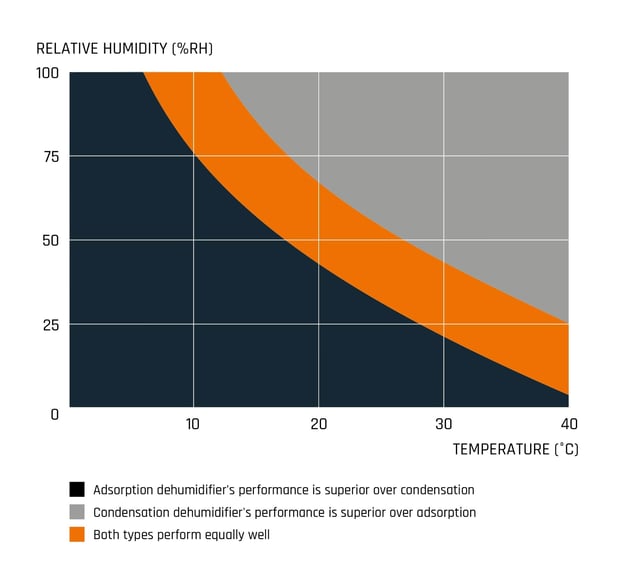Condensation (or cooling-based) dehumidification relies on a temperature reduction in order to remove water. It takes advantage of the fact, that cooler air can hold less water. This means that the dehumidifier cools the air to the saturation point and further still, which causes the moisture to deposit on the surface as condensation. Naturally then, the relative humidity after the cooler will be high/saturated. Thus, heat is often added to ensure the right temperature and thus relative humidity.
Adsorption dehumidifiers remove moisture from the process airflow without reducing the temperature. The temperature increases a little bit due to the heat energy related to water depositing on a surface. Depending on the dryness of the rotor, the water will be likely to deposit on the rotor. By increasing the temperature on the regeneration, the rotor can be dried more and thus allow even drier air in the process outlet. Therefore, the adsorption dehumidifiers will be able to create humidity levels/dewpoints below 0°C without any issues with ice. This also means that adsorption solutions are less sensitive to low temperatures and dry air compared to cooling-based dehumidifiers. Whether one option is better than the other depends entirely on the air properties in each situation.
 Get to know more about our 4 key differences between adsorption and condensation dehumidifiers
Get to know more about our 4 key differences between adsorption and condensation dehumidifiers
